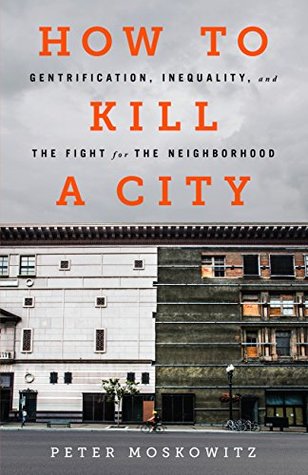More on this book
Community
Kindle Notes & Highlights
Read between
July 21 - July 22, 2020
Gentrification is not about individual acts; it’s about systemic violence based on decades of racist housing policy in the United States that has denied people of color, especially black people, access to the same kinds of housing, and therefore the same levels of wealth, as white Americans.
gentrification works on a mass scale only because most inner cities have been purposely depressed and therefore are now profitable to reinvest in. That led Smith to conclude that “gentrification is a back-to-the-city movement all right, but a back-to-the-city movement by capital rather than people.”
With a few lines of anti-density, racist planning policy, the federal government essentially forced the creation of the suburbs and the near-complete disinvestment of the inner city.
the black population of San Francisco is down to 5.8 percent of the city, less than half of what it was in 1970. The majority of that change took place in the last twenty years.
in Oakland, the black population fell from 43 to 26 percent between 1990 and 2011.
The suburbanization of the United States pushed whites into a privatized, anti-communal form of living, encouraged more traditional gender roles (women as housewives, men as breadwinners), and reified racial boundaries—keeping white people separate from black people, Latinos, and other ethnic groups.
In place of collectivism or urbanism, the suburbs offered consumerism—a life in which meaning is built through buying things.
Roads are still heavily subsidized by the feds: one study found that drivers pay only half the real cost of driving.
For the privilege of enduring traffic, air pollution, isolation, and monotony, Americans subsidize the suburbs to the tune of $100 billion a year.
These subsidies to the suburbs have given us the twin illusions that the American city was in some sort of natural tailspin for decades and that the suburbs are inherently more desirable, when in reality the suburbs are just better funded.
another Jacobs maxim: extraordinary amounts of money, forethought, and policy are required to make a place feel so monotonous, sterile, and vulgar.
Gentrified thinking is like the bourgeois version of Christian fundamentalism, a huge, unconscious conspiracy of homogenous patterns with no awareness about its own freakishness. The gentrification mentality is rooted in the belief that obedience to consumer identity over recognition of lived experience is actually normal, neutral, and value free.”
Individuals are not responsible for gentrification, but they—we—can be complicit in it.
newcomers plant themselves in the borough, bring with them an internalized suburban logic, and then dispense that logic onto the borough’s streets, insisting on expensive food and sterile streetscapes, Targets and Walgreens and apartment buildings that feel more like gated communities than like city-born edifices, replete with gyms and spas and sometimes even tennis courts, so that at the end of the day there are no winners in Brooklyn.
the suburbs were both an economic project and a race, gender, and political project that reinforced conservative values, pro-urban, anti-gentrification movements must recognize that what we build and what we fund can have a disparate impact on different groups.


